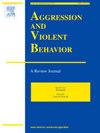Crime, place, policy, and politics
IF 3.4
2区 心理学
Q1 CRIMINOLOGY & PENOLOGY
引用次数: 0
Abstract
Over several decades, a robust body of empirical evidence has developed concerning crime occurring at specific locations, often referred to as “hot spots” (NASEM, 2018). Among researchers, it is well understood that there are efficiencies associated with attending to these geographic crime concentrations.
In this “review of reviews,” we examine systematic reviews of place-based anti-crime strategies, discuss the policy implications of this research, and examine the obstacles associated with disseminating place-based and other research findings in an era increasingly defined by political polarization. We also explore how these obstacles might be overcome.
Our examination of 17 systematic reviews demonstrates that (1) the large majority of place-based interventions have meaningful impacts on crime and violence, (2) these strategies do not substantially displace crime to nearby areas, (3) the effect sizes associated with these interventions are typically described as modest to moderate, and (4) the place-based strategies that feature policing generally have larger effects than those that feature green space, urban upgrading, or situational crime prevention strategies.
From these findings, we draw the following commonsense conclusions: when using place-based strategies to fight crime, policymakers and practitioners should target the places where crime concentrates and use a combination of enforcement and non-enforcement approaches that feature community-oriented problem-solving.
Despite the apparent simplicity of these findings, translating them into policy is challenging due to communication gaps between researchers and policymakers and also political constraints. While researchers may have limited options in addressing the latter challenge, the former may be overcome by using clear, direct communication that aligns with the public's apparent preference for balanced approaches to crime reduction. Future research should focus on refining these findings, improving communication about them with policymakers, and ensuring that they are implementable in real-world settings.
犯罪、地点、政策和政治
几十年来,关于特定地点(通常被称为 "热点")发生的犯罪,已经积累了大量经验证据(NASEM,2018)。在这篇 "评论综述 "中,我们研究了基于地点的打击犯罪策略的系统性评论,讨论了该研究的政策影响,并探讨了在一个政治两极分化日益严重的时代,传播基于地点的研究成果和其他研究成果所面临的障碍。我们对 17 篇系统性综述的研究表明:(1) 大部分基于场所的干预措施对犯罪和暴力产生了有意义的影响;(2) 这些策略不会将犯罪大量转移到附近地区;(3) 与这些干预措施相关的效应大小通常被描述为适中到中等;(4) 以维持治安为特色的基于场所的策略通常比以绿地、城市升级或情景犯罪预防策略为特色的策略具有更大的效应。从这些发现中,我们得出了以下常识性结论:在使用以场所为基础的策略打击犯罪时,政策制定者和从业者应针对犯罪集中的场所,采用执法和非执法相结合的方法,以社区为导向解决问题。尽管这些发现看似简单,但由于研究者和政策制定者之间的沟通障碍以及政治限制,将这些发现转化为政策具有挑战性。虽然研究人员在应对后一项挑战时可能选择有限,但前一项挑战可以通过清晰、直接的沟通来克服,这种沟通符合公众对平衡减少犯罪的方法的明显偏好。未来的研究应侧重于完善这些研究成果,改善与政策制定者的沟通,并确保这些研究成果在现实环境中可以实施。
本文章由计算机程序翻译,如有差异,请以英文原文为准。
求助全文
约1分钟内获得全文
求助全文
来源期刊

Aggression and Violent Behavior
Multiple-
CiteScore
7.50
自引率
4.30%
发文量
63
期刊介绍:
Aggression and Violent Behavior, A Review Journal is a multidisciplinary journal that publishes substantive and integrative reviews, as well as summary reports of innovative ongoing clinical research programs on a wide range of topics germane to the field of aggression and violent behavior. Papers encompass a large variety of issues, populations, and domains, including homicide (serial, spree, and mass murder: sexual homicide), sexual deviance and assault (rape, serial rape, child molestation, paraphilias), child and youth violence (firesetting, gang violence, juvenile sexual offending), family violence (child physical and sexual abuse, child neglect, incest, spouse and elder abuse), genetic predispositions, and the physiological basis of aggression.
 求助内容:
求助内容: 应助结果提醒方式:
应助结果提醒方式:


